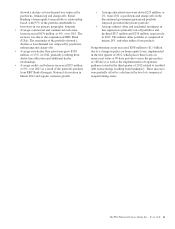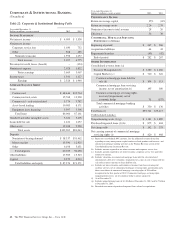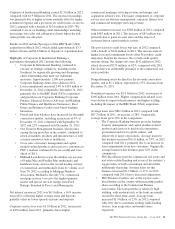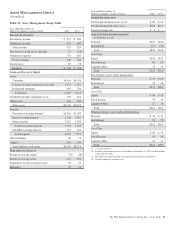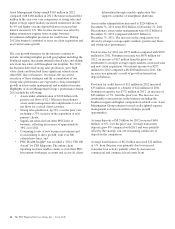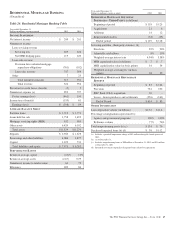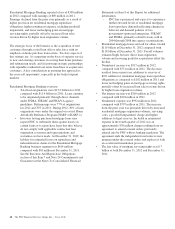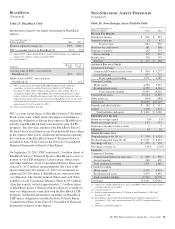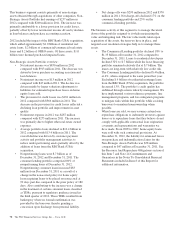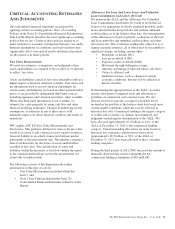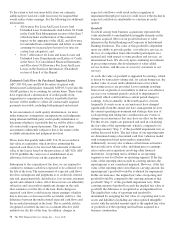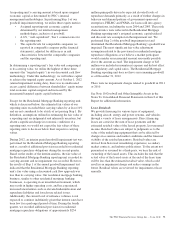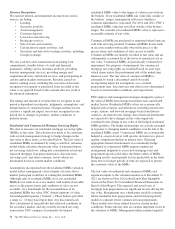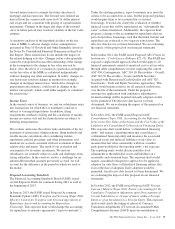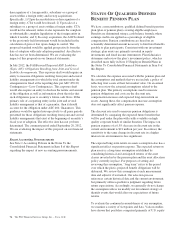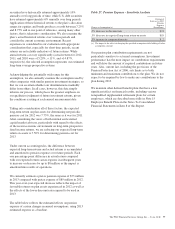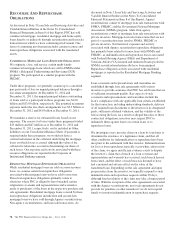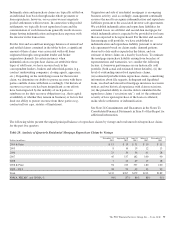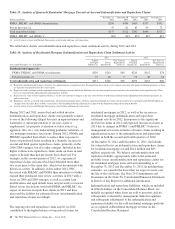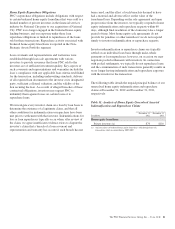PNC Bank 2012 Annual Report Download - page 90
Download and view the complete annual report
Please find page 90 of the 2012 PNC Bank annual report below. You can navigate through the pages in the report by either clicking on the pages listed below, or by using the keyword search tool below to find specific information within the annual report.C
RITICAL
A
CCOUNTING
E
STIMATES
A
ND
J
UDGMENTS
Our consolidated financial statements are prepared by
applying certain accounting policies. Note 1 Accounting
Policies in the Notes To Consolidated Financial Statements in
Item 8 of this Report describes the most significant accounting
policies that we use. Certain of these policies require us to
make estimates or economic assumptions that may vary under
different assumptions or conditions and such variations may
significantly affect our reported results and financial position
for the period or in future periods.
Fair Value Measurements
We must use estimates, assumptions, and judgments when
assets and liabilities are required to be recorded at, or adjusted
to reflect, fair value.
Assets and liabilities carried at fair value inherently result in a
higher degree of financial statement volatility. Fair values and
the information used to record valuation adjustments for
certain assets and liabilities are based on either quoted market
prices or are provided by independent third-party sources,
including appraisers and valuation specialists, when available.
When such third-party information is not available, we
estimate fair value primarily by using cash flow and other
financial modeling techniques. Changes in underlying factors,
assumptions, or estimates in any of these areas could
materially impact our future financial condition and results of
operations.
PNC applies ASC 820 Fair Value Measurements and
Disclosures. This guidance defines fair value as the price that
would be received to sell a financial asset or paid to transfer a
financial liability in an orderly transaction between market
participants at the measurement date. This guidance requires a
three level hierarchy for disclosure of assets and liabilities
recorded at fair value. The classification of assets and
liabilities within the hierarchy is based on whether the inputs
to the valuation methodology used in the measurement are
observable or unobservable.
The following sections of this Report provide further
information on this type of activity:
• Fair Value Measurements included within this
Item 7, and
• Note 9 Fair Value included in the Notes To
Consolidated Financial Statements in Item 8 of this
Report.
Allowances For Loan And Lease Losses And Unfunded
Loan Commitments And Letters Of Credit
We maintain the ALLL and the Allowance For Unfunded
Loan Commitments And Letters Of Credit at levels that we
believe to be appropriate to absorb estimated probable credit
losses incurred in the loan portfolio and on these unfunded
credit facilities as of the balance sheet date. Our determination
of the allowances is based on periodic evaluations of the loan
and lease portfolios and unfunded credit facilities and other
relevant factors. This evaluation is inherently subjective as it
requires material estimates, all of which may be susceptible to
significant change, including, among others:
• Probability of default (PD),
• Loss given default (LGD),
• Exposure at date of default (EAD),
• Movement through delinquency stages,
• Amounts and timing of expected future cash flows,
• Value of collateral, and
• Qualitative factors, such as changes in current
economic conditions, that may not be reflected in
historical results.
In determining the appropriateness of the ALLL, we make
specific allocations to impaired loans and allocations to
portfolios of commercial and consumer loans. We also
allocate reserves to provide coverage for probable losses
incurred in the portfolio at the balance sheet date based upon
current market conditions, which may not be reflected in
historical loss data. Commercial lending is the largest category
of credits and is sensitive to changes in assumptions and
judgments underlying the determination of the ALLL. We
have allocated approximately $1.8 billion, or 44%, of the
ALLL at December 31, 2012 to the commercial lending
category. Consumer lending allocations are made based on
historical loss experience adjusted for recent activity.
Approximately $2.2 billion, or 56%, of the ALLL at
December 31, 2012 have been allocated to these consumer
lending categories.
During the third quarter of 2012, PNC increased the amount of
internally observed data used in estimating the key
commercial lending assumptions of PD and LGD.
The PNC Financial Services Group, Inc. – Form 10-K 71


